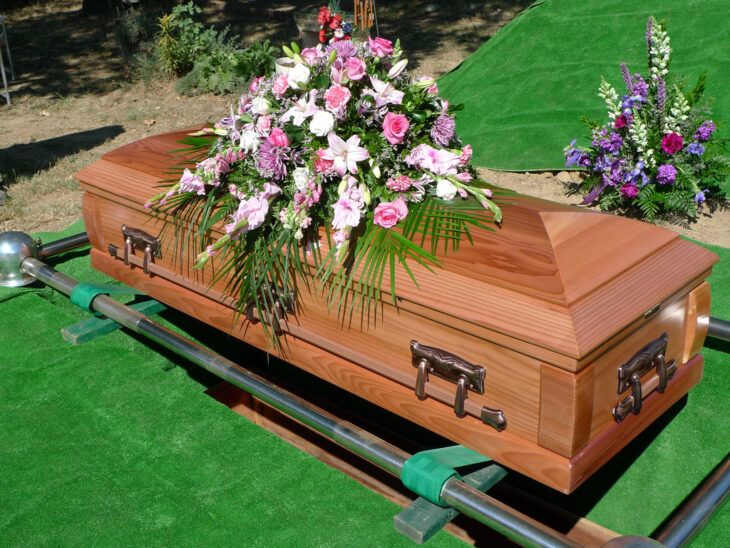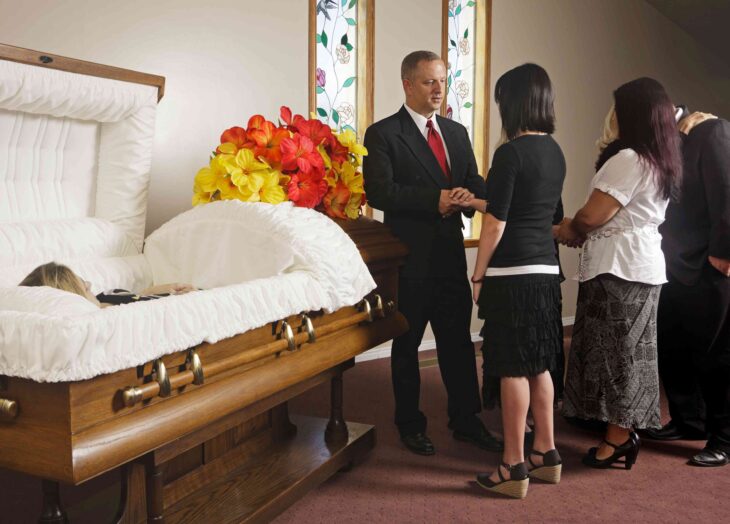Caskets have been a crucial part of most funeral plans for years. However, it has only recently become a common practice to choose a casket based on design and style.
The most sought-after models can be worth a small fortune. However, it is also possible to get a simple yet elegant casket at an affordable price point from one of the many manufacturers that specialize in this product.

Source: memorialplanning.com
Contents
- Step #1: Consider The Size Of The Casket
- Step #2: Select A Casket That Is In Line With Your Loved One’s Personal Taste
- Step #3: Choose A Casket That Suits Your Budget
- Step #4: Pick whether the casket will be buried or cremated
- Step # 5: Gasketed or Non-Gasketed
- Step # 6: Take Into Account the Cemetery
- Step #7: Casket personalization
- Step #8: Discuss Specific Options In-Depth With Your Funeral Director & Family
- Wrapping It Up
Step #1: Consider The Size Of The Casket
Take a moment to consider the size of the casket for your loved one. The size of your loved one’s casket is an important decision that you will have to make when planning a funeral.
Make sure to take into account their physical attributes, height, weight, and any other factors which could affect the size of the casket.
Otherwise, it would be very difficult for you to replace your casket at the last minute. If you’re unsure ask others in your family to guide you better.
Step #2: Select A Casket That Is In Line With Your Loved One’s Personal Taste
The purchase of a casket is a very important decision because it is used to convey your loved one’s final remains. When making this very difficult decision from the many available caskets on the market, there are a few things to consider.
Caskets can be made from a variety of different materials such as:
- Stainless Steel
- Standard Steel
- Bronze
- Copper
- Walnut
- Mahogany
- Poplar
- Cherry
- Maple
- Oak
- Veneer
- Pine
Each material has its pros and cons. Metal caskets tend to be more durable but they lack the warmth that wood provides.
Find out which color did your loved ones like and what designs and materials would they prefer if they’re still alive.
Knowing these will help you decide on a better casket and quickly.
If you’re not sure, try asking other people who’re close to them to determine what the person actually liked based on past experiences.

Source: verywellhealth.com
Step #3: Choose A Casket That Suits Your Budget
Choosing a casket can be confusing. The cost of a casket ranges from about $1,000 to several thousand dollars, depending on its material. However, you don’t have to spend your whole life savings to buy an expensive casket.
If you are looking for a casket that is within your budget, you can find one that is affordable for you. You can find an affordable casket at trustedcaskets.com.
Step #4: Pick whether the casket will be buried or cremated
As you know choosing between cremations or burring your loved one can be a rather difficult decision that you have to make, but nevertheless, you have to take that decision because the type of casket you have to choose depends on that decision. This is because each type of casket is built differently and if you choose the wrong casket, things can get a little complicated.
Firstly take into account what your loved ones wish would be, as some people don’t prefer to get their loved ones cremated. Once the decision has been made you can finally decide on the type of casket that your loved one is going to need.
If you have decided to get your loved one cremated, then you should opt for a casket that is made up of wood or any other material that can be easily burned, obviously, steel is going to be a bad decision for that.
Step # 5: Gasketed or Non-Gasketed
A gasket is a seal that is around the casket that prevents external elements from getting into the casket, having a gasket built into your casket is an option that you have to look into based on different circumstances. A gasket casket can greatly delay the decomposition and provide you the time to get all your friends and family gathered for that one last goodbye.
Also, take into account the wishes of your loved one in between a gasket or non-gasketed casket.

Source: theconversation.com
Step # 6: Take Into Account the Cemetery
As you know there are different cemeteries everywhere and each cemetery has its own set of rules and regulations. Some cemeteries even have a standard of casket that you have to follow if you want your loved ones to be buried there. Some cemeteries also require you to have a burial container, with your casket as it helps keep the grounds uniform and stable.
If you have to get a burial container, then you are also going to have to factor that into your budget because getting a burial container can get expensive sometimes.
Step #7: Casket personalization
Again this all depends on you and the wishes of your loved one as some people wish to have some form of personalization on their casket while others just want it anonymous, but getting it personalized is again an option that you are going to have to opt for as it does not come standard. Some companies provide personalization for a small fee, or you can just hire a professional to do it for you, regardless the choice is yours.
Step #8: Discuss Specific Options In-Depth With Your Funeral Director & Family
These days, a casket is a choice that is left entirely with the family. This is a good thing in many ways, but there are some things that you should know before you get your loved one’s body into a casket.
The first thing to consider is how long the body will be in the casket. The cremation process can take anywhere from 2 hours to more than 4 hours, but most often it takes about five hours.
It’s important that you talk to your family and funeral director in detail about every aspect of the funeral ceremony.

Source: cheatsheet.com
Wrapping It Up
So, here you have it, a step-by-step guide to choosing the best possible casket for your loved one.
Having all of these points in mind will help you better get a casket in the short time possible as well as getting the particular style that actually suits the taste of your loved one as well.
